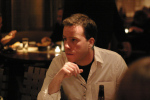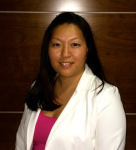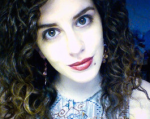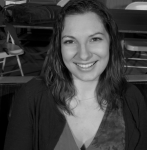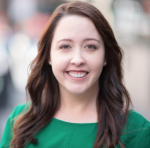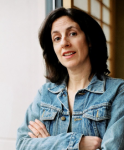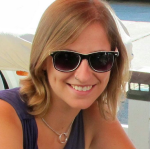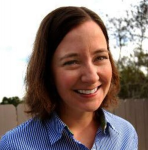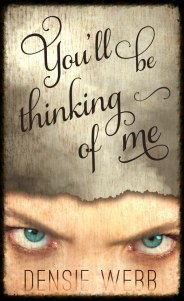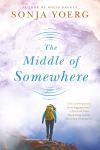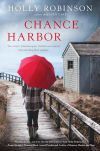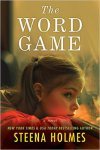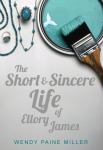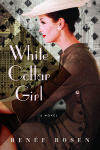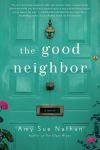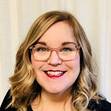Amy Sue Nathan's Blog: Women's Fiction Writers, page 21
October 31, 2015
Writers, Stop Apologizing For Not Being Published
After visiting with friends and family and launching THE GOOD NEIGHBOR in Philadelphia, I headed to the James River Writers Conference in Richmond, Virginia (check it out, no lie, I will shrivel up if they don’t invite me back). I had a ten-minute turnaround after a 5+ hour train ride, and then it was off to the speakers and volunteers welcome party.
I’m like most writers I know, a friendly introvert. So when I walked up to this mansion, with my car mates nearby, all I could think of was HELL NO I HAVE TO MINGLE and WHO THOUGHT THIS WAS A GOOD IDEA FOR WRITERS?
But I prevailed. In situations like these I simply pretend I’m comfortable. I headed toward the crab dip and made a new friend; the bar where I made another. I met people I’d never known and I met people I’ve known for years. (You know how it is with internet friends.) I was social in intimate groupings, and have come to a place where I am also okay, if needed, being on my own in a large group. One good thing about being a writer in a group of writers, if you’re alone and minding your own business, no one thinks you’re antisocial or weird. They just think you’re plotting a chapter or taking notes for an article.
Awake and with lipstick on before 8 am the next morning, I was off to the conference where I’d be on multiple panels for the next two days. And it was off to a helluva start. Friday night to Saturday morning by 9 am I’d met award-winning journalists, multi-published novelists, acclaimed poets, and tenured professors. I was in awe of the level of talent around me, of the accomplishments of these people who also had the word “author” under the name on their badge.
For a moment, I felt small. Intimidated. And very much as if I didn’t belong. I’ve always felt at home in my writer skin and never like an impostor. Until then.
But people started talking, asking, laughing, collaborating — and I realized, there was no where I belonged more. Being completely at home among familiar strangers is really a wonderful thing.
Among this diverse group of working writers, were people who spoke my language before I’d said anything. There were journalists who wished they were novelists and poets who wanted to save the planet. There were professors who were authors and authors who’d written one or twenty books. There were writers of every genre talking and laughing and nodding.
And then, there were the aspiring authors of every kind.
These were the people we were there to serve and inspire.
I spoke to large groups and I spoke one-on-one, and one thing I found these dedicated writers had in common was that when I asked, “What do you write?” their answer almost included…”but I’m not published.” My reply was always the same. “Don’t say it that way.” Truly, folks. Stop it already.
It got me thinking about how writers apologize for where they are or aren’t in their writing journey. No other professions do this. You don’t hear someone say, “I want to be a heart surgeon but I’m not one yet, I am so sorry.” You never hear someone mutter, “I’m working really hard to become an accountant, but I’m not quite there yet. Ugh.”
But writers?
“I write middle grade fantasy. Oh, but I’m not published.”
“I write women’s fiction, but I’m not published or anything.”
“I write historical non-fiction but I’m not ready.”
The tone was always apologetic, the eyes looked away or rolled as if to offset the implied disappointment felt by the writer — perhaps what they imagined I was thinking.
Stop apologizing for not being published.
These were people who wanted to be published, some who were close (and if you don’t want to be published, that’s fine too, but most of these writers were working toward that goal). Some had agents, many did not. Some were pitching, some were not. Some had books and work piled under their figurative mattresses, some did not. But they were all at a freaking WRITERS CONFERENCE where they belonged because they were with hundreds of other writers, published and not, all connecting and talking and learning things they’d never known before or being reminded of things they’d forgotten or cast aside. I learned so much that weekend simply by being there. Through listening, through talking, answering, and maybe through a little osmosis.
Just because you’re not published doesn’t diminish the value of your writing. Most of us don’t get rich at this stuff, face it. So anyone who’s working his or her ass off (and you know you do that by sitting all the time) deserves to use a period at the end of the declarative sentence that answers the question, WHAT DO YOU WRITE?
I write women’s fiction.
I write middle grade fantasy.
I write essays.
I write political satire.
I write poems.
Because that’s what I was asking. WHAT DO YOU WRITE? And that’s what I wanted to know. There were no assumptions, just curiosity. As a women’s fiction author, blogger, reader, and devotee, I’m usually surrounded by women’s fiction writers who are usually women. Here I was at a writer’s conference with men! With poets! With romance writers! With journalists! (I’m not even mentioning the racial and ethnic diversity, that’s another post.) Here I was, rubbing shoulders with people who wanted to talk about the pitfalls of publishing even though they had seventeen published novels; people who wanted to talk about plots, networking, technology, querying, character arcs, research, and anything else closely or remotely related to writing and publishing — big publishing, small publishing, self-publishing — whether or not they had a byline or book credit. This was a group of people dedicated to the idea that words matter, and that getting those words to the public, matters.
There was no bickering that your publishing is better than my publishing. There was no fighting that your genre is better than mine.
There was a sincere generosity of spirit, a sharing of information, and a seriously awesome vibe.
And no apologies necessary.
So, WHAT DO YOU WRITE?
Click to view slideshow.








October 12, 2015
Author Patti Callahan Henry Interviews Amy Sue Nathan About THE GOOD NEIGHBOR
 It’s publication day for my second novel, THE GOOD NEIGHBOR, and today, multi-published, New York Times bestselling women’s fiction author, my friend Patti Callahan Henry is flipping us all upside down and interviewing me on my own blog! (Eleanor Brown interviewed me for THE GLASS WIVES. Am I lucky, or what?)
It’s publication day for my second novel, THE GOOD NEIGHBOR, and today, multi-published, New York Times bestselling women’s fiction author, my friend Patti Callahan Henry is flipping us all upside down and interviewing me on my own blog! (Eleanor Brown interviewed me for THE GLASS WIVES. Am I lucky, or what?)
I hope that after continuing on this journey with me that you’ll take a chance on THE GOOD NEIGHBOR and that you’ll encourage all your family, friends, and neighbors to do the same!
Amy xo
Want your copy before you read the interview? Click here!
Author Patti Callahan Henry Interviews Amy Sue Nathan About THE GOOD NEIGHBOR
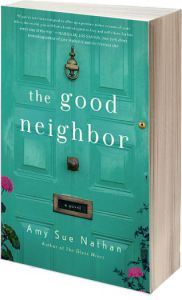 Patti: As a writer, I am always fascinated about the inspiration behind a story. You know, the real story behind the story. Can you tell us how this book started? What made you say “Now, this is a story I want to tell.”
Patti: As a writer, I am always fascinated about the inspiration behind a story. You know, the real story behind the story. Can you tell us how this book started? What made you say “Now, this is a story I want to tell.”
Amy: Believe it or not, it all started with the 1945 movie, Christmas in Connecticut. My friend Christina Gombar encouraged me to watch it, knowing my penchant for romantic comedies and old movies. She also suggested it was a modern story cloaked in a black and white, war-era film. And she was right! In Christmas in Connecticut, Barbara Stanwyck plays Elizabeth Lane (I totally named Izzy after her, and you’ll see why)who is a popular columnist at a New York women’s magazine (remember those?). She shares recipes, household tips, and pontificates on her Connecticut farmhouse life with her husband and baby. Sounds great, right? It would be if any of it were true. This Elizabeth Lane is a single woman who lives in New York and can’t even boil a pot of water. One day, Elisabeth’s publishers asks (demands) she invite a huge fan and injured soldier to her home — her Connecticut farmhouse home — for Christmas. Elisabeth has just days to find a house, a husband, and a baby. Mayhem ensues.
What struck me about this hilarious movie was the potential for a modern twist, the what-if this happened now. Then I realized, as a blogger since 2006, how I’d really laid everything on the line and was honest. What if I hadn’t. What if I’d made up everything I shared when I was “mommy blogging” back in the day? What if I did that now? (I don’t. I’m an open book, forgive the pun.)
The thoughts of what’s shareable and what’s not came to mind right away. Is there a difference between a lie and a secret? How about privacy? Does that come into play? We all love the internet but it can really get it into trouble. How would someone get out of that kind of trouble?
That’s when my Elizabeth “Izzy” Lane was born.
I also yearned to write a story set in a Northeast Philadelphia neighborhood like the one I grew up in, without having it set in the sixties or seventies. Thanks to fiction, I had the pleasure of inventing a neighborhood like mine that was right for Izzy right now.
Patti: Izzy is so witty, so full of ideas and fun (even as she ‘lies’ in her blog). And you are so funny and witty, so full of ideas and fun. How much of you is in Izzy? And if any of you hides in Izzy, was it on purpose or did you only see it in hindsight?
Amy: You are very generous, Patti. Thank you! When I started writing The Good Neighbor I was actually relieved there was such a distance between me and Izzy. I knew enough about her to write her, but it wasn’t so close that I had to remind myself it was fiction. I never got the two of us confused. Then one day I was saying as much to a friend who has known me for about 24 years — how Izzy is a decade or more younger than I am, how her experiences don’t mirror mine at all, and how much of a relief that was to be in a different place in life than a main character. Then this happened:
“So Izzy doesn’t have any of your experiences?”
“Nope. Not really. And she’s a lot younger than I am.”
“How old is Izzy in the book?”
“Thirty-nine.”
“And she just got divorced?”
“Uh huh.”
“How old were you when you got divorced?”
I hesitated. Then said: “Shut up.”
So to answer your question, Patti? Hindsight.
Patti: What was the biggest surprise when you were writing this book? Often, I find that just when I think I have a hold of the story, it gets a hold of me and BAM, surprise. Did this happen to you at all?
Amy: It always happens to me and I love that. Someone comes around a corner you didn’t expect and everything changes. It’s hard to explain that phenomenon of the characters taking over the story to non-writers, but it totally exists! In The Good Neighbor I was totally shocked at things surrounding Mrs. Feldman (can’t say what, because spoiler alert). She told me her part of the story. I was merely the scribe.
Patti: Mrs. Feldman is a voice of wisdom and advice, a woman we all wish we knew. Do you have someone like this in your life? Was Mrs. Feldman based on anyone you knew?
Amy: Mrs. Feldman wasn’t based on anyone, and honestly, I’m not sure where she came from. I grew up with wonderful neighbors, had two grandmothers (one until I was 14 and one until I was 40), and some teachers I admired. I guess Mrs. Feldman has tidbits of all of them but it wasn’t intentional, I mean, that makes sense, right? She also has things about her that I can’t attribute to anyone else but her. She’s her own woman for sure (and I think she’d agree).
Patti: What is next for your beautiful storytelling voice?
Amy: I’m steeped in writing my third novel right now, about a woman named Teddi Lerner who, after six years, goes back to the hometown she abandoned during her best friend’s funeral. Needless to say, Teddi’s got a lot of explaining to do to a lot of people.
Thank you for to all my WFW blog readers!
You are a huge source of support (yes, even when you’re lurking)!
Click here for ways to purchase the book. Also available at your local Barnes & Noble, Walmart, Sam’s Club, and BJ’s! If you see TGN out in the wild, take a photo and share it with me!








October 1, 2015
Booklist Calls THE GOOD NEIGHBOR “Humorous Women’s Fiction That Explores Deeper Themes”
Yesterday I had a plumber at my house for seven hours. Oh, I lie. I had three plumbers at my house for seven hours. But today, The Good Neighbor has this review from Booklist, which is proof that at least right now, in this moment, the universe is on my side.
Amy xo
Booklist says:
“Recently divorced mom Izzy Lane decides to spice things up by inventing a boyfriend and writing about him on her blog, a little white lie of no real consequence since her blog only has few readers. Then her media-maven BFF, Jade, offers Izzy the opportunity to blog for Pop Philly, a local entertainment website, and Izzy’s fake relationship captivates an international audience. Only her elderly neighbor knows the truth, and soon everyone else is clamoring to meet “Mac,” her truly too-good-to-be-true suitor. As her lie spirals out of control, Izzy is forced to face the reasons why she’s so dissatisfied with her real life. Nathan’s latest swings unexpectedly from lighthearted romantic comedy to a serious examination of honesty and friendship. Izzy and her friends sense that they’re getting older and need to take life seriously but hesitate to let go of their youth, a problem typical of middle-class Gen Xers. Nathan also touches on elder care and single motherhood. A tale for readers who enjoy humorous women’s fiction that explores deeper themes.” — Nanette Donohue
Want to see what I looked like in 1998? (You’ve been warned!) Click here!








September 28, 2015
10 Literary Agents Seeking Women’s Fiction NOW & 8 Query Tips by Chuck Sambuchino
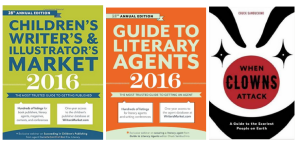 I’m asked all the time how I found my agent and where on earth did I find the 126 agents I queried before I signed with my first agent in 2010. Well. I not only used the internet, but I also used a good old-fashioned book. But to help you get started, or to help you fill in some gaps, today we have Chuck Sambuchino who not only offers 8 Tips For Writing Queries but 10 Literary Agents Seeking Women’s Fiction NOW. If you’re not quite ready, jot down these names and check them out when your manuscript is polished and primed. And don’t forget all the resources mentioned in Chuck’s bio below!
I’m asked all the time how I found my agent and where on earth did I find the 126 agents I queried before I signed with my first agent in 2010. Well. I not only used the internet, but I also used a good old-fashioned book. But to help you get started, or to help you fill in some gaps, today we have Chuck Sambuchino who not only offers 8 Tips For Writing Queries but 10 Literary Agents Seeking Women’s Fiction NOW. If you’re not quite ready, jot down these names and check them out when your manuscript is polished and primed. And don’t forget all the resources mentioned in Chuck’s bio below!
This is one of the most fun posts I’ve offered in four and a half years! Chuck put together the list to celebrate the release of 3 new books this month, the 2016 Guide to Literary Agents, the 2016 Children’s Writer’s & Illustrator’s Market, and his anti-clown humor book When Clowns Attack: A Survival Guide.
Amy xo
(Sorry for the wonky photo formatting, I’ve reached my “figure out a way to fix it” limit. Photos are above the agent info!)
10 Literary Agents Seeking Women’s Fiction NOW
As the editor of the 2016 Guide to Literary Agents, it’s my job to compile oodles of markets for kidlit writers and illustrators. But the truth is that not every market listed everywhere is 100% open—it’s not that simple. Sometimes a few agents at any agency are open to signing new writers, whereas others are not. Sometimes a publisher or agent closes themselves down to submissions for a while. With all these ins and outs, what’s a writer to do?
It’s with all this in mind that I wanted to spotlight 10 literary agents who are actively seeking women’s fiction submissions now. Their e-mails are below. Query away. All of these agents listed below personally confirmed to me that they are seeking clients and open to submissions as of October 2015.
Good luck querying! If you want to see many, many more markets for writers of all children’s books, seek out the new & updated 2016 Guide to Literary Agents.
1. Scott Eagan
Greyhaus Literary
http://www.greyhausagency.com/
How to contact: E-query scott@greyhausagency.com with “Query” in the subject line. Keep the word count between 75,000 and 110,000. “Please focus on one issue and not a ton of personal problems the protagonist has. Stories can have happy or sad endings. Please no adultery.”
2. MacKenzie Fraser-Bub
Trident Media Group
http://www.tridentmediagroup.com/
How to contact: Send a query letter, pasted in the body of the email, to MFraserBub@TridentMediaGroup.com. Please do not send a manuscript or proposal until you have been requested to do so.
3. Kimberly Brower
Rebecca Friedman Literary
How to contact: E-query Kimberly@rfliterary.com. Submit a brief query letter and your first chapter (pasted into the email, not to exceed fifteen double-spaced pages). No attachments.
4. Mallory C. Brown
TriadaUS
How to contact: E-query Mallory@triadaus.com. When querying, please include the first ten ms pages in the body of the e-mail after your query.
5. Danielle Burby
HSG Agency
How to contact: Email a query letter and the first five pages of your manuscript to dburby@hsgagency.com. No attachments.
6. Jennifer Johnson-Blalock
Liza Dawson Associates
http://www.lizadawsonassociates.com/
How to contact: E-mail queryjennifer@lizadawsonassociates.com.
7. Marie Lamba
Jennifer De Chiara Literary
How to contact: Please email a query to marie.jdlit@gmail.com. Put “Query” in the subject line of your email, and please send the first twenty pages in the body of your email, along with a one-paragraph bio and a one-paragraph synopsis.
8. Carly Watters
P.S. Literary
How to contact: E-query query@psliterary.com with “Query for Carly” in the subject line. “Do not send attachments. Always let us know if your manuscript/proposal is currently under consideration by other agents/publishers. If you don’t receive a response to your query within 4-6 weeks it means a no from the agency. In my women’s fiction, I look for an external hook other than the love story (career, family, personal history etc.)”
9. Patricia Nelson
Marsal Lyon Literary Agency
http://www.marsallyonliteraryagency.com/
How to contact: E-query Patricia@MarsalLyonLiteraryAgency.com.
10. Courtney Miller-Callihan
Sanford J. Greenburger Associates
How to contact: E-query cmiller@sjga.com.
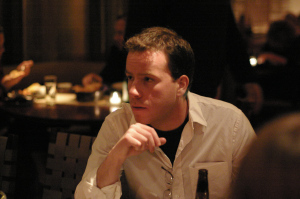 Chuck Sambuchino (@chucksambuchino) of Writer’s Digest Books edits the GUIDE TO LITERARY AGENTS and the CHILDREN’S WRITER’S & ILLUSTRATOR’S MARKET. His Guide to Literary Agents Blog is one of the largest blogs in publishing. His 2010 humor book, HOW TO SURVIVE A GARDEN GNOME ATTACK, was optioned by Sony Pictures. His latest humor book, WHEN CLOWNS ATTACK: A SURVIVAL GUIDE (Sept. 29 2015), will protect people everywhere from malicious bozos and jokers who haunt our lives. His books have been mentioned in Reader’s Digest, USA Today, the New York Times, The Huffington Post, Variety, New York Magazine, and more.
Chuck Sambuchino (@chucksambuchino) of Writer’s Digest Books edits the GUIDE TO LITERARY AGENTS and the CHILDREN’S WRITER’S & ILLUSTRATOR’S MARKET. His Guide to Literary Agents Blog is one of the largest blogs in publishing. His 2010 humor book, HOW TO SURVIVE A GARDEN GNOME ATTACK, was optioned by Sony Pictures. His latest humor book, WHEN CLOWNS ATTACK: A SURVIVAL GUIDE (Sept. 29 2015), will protect people everywhere from malicious bozos and jokers who haunt our lives. His books have been mentioned in Reader’s Digest, USA Today, the New York Times, The Huffington Post, Variety, New York Magazine, and more.








September 16, 2015
Guest Post: Author Cora Ramos Travels Her Own Path To Inspiration. What’s Yours?
Lately I’ve been thinking about the inspiration for The Good Neighbor, because I now know, from experience, that’s what readers want to know. I’ve realized that this new novel sprung from several seeds, not just one. Today, author Cora Ramos shares with us her inspiring sources of inspiration.
Please welcome Cora Ramos to WFW and tell us — what was your path to inspiration for one of your books or stories?
Amy xo
What Is The Path To Inspiration?
by Cora Ramos
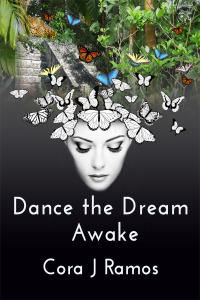 Just as there are plotters and pantsers, and writers who use Scrivener and those that must use pen/pencil and paper, so too we all find inspiration into our stories in different ways. There is no one path nor is it the same for every book. For me, it is through the senses that my work is brought into form; a painting, a song, a smell, the feel of a silk scarf or in the case of my first book, a déjà vu moment when all the sensory details came together in one poignant moment of time that changed me forever.
Just as there are plotters and pantsers, and writers who use Scrivener and those that must use pen/pencil and paper, so too we all find inspiration into our stories in different ways. There is no one path nor is it the same for every book. For me, it is through the senses that my work is brought into form; a painting, a song, a smell, the feel of a silk scarf or in the case of my first book, a déjà vu moment when all the sensory details came together in one poignant moment of time that changed me forever.
It started on a trip to the Yucatan, Mexico and a visit to the ruins of a little known complex of pyramids called Coba, most of which are yet to be excavated and restored. In one déjà vu moment, the pyramid came alive and my senses tapped into some reservoir within me that sensed there were certain places I could access in the pyramid. I followed the intuition of the moment and found a room in the center. I felt like I knew things, and smelled the past of a Mayan life there. There were feelings that confused me but when I got home after the trip, it stewed in my brain until one day when I had to quick–write a story for a teacher writing in-service. I remembered that experience and wrote it out.
Soon after, I visited a private writing class that a friend of mine took me to. I wrote out the scene and the teacher encouraged me to keep writing and join her class. Then I had to come up with a story. I wracked my brain for a plot and when it wouldn’t come, I took out paint and paper and did a quick painted a shamanic woman dancing around a fire. The story started to form in my mind and motivated me to start writing even though I had no idea where it would go—yeah a pantser.
That began the long journey of learning how to write while plotting out a story that is now published with Black Opal Books, Dance the Dream Awake. Many of the experiences I had on that journey to Mexico were woven into the story.
My second novel, Haiku Dance, came about in a surprising way. I was writing a sequel to my first book, in the viewpoint of the male character. I have a samurai sword that inspired me to choose a Japanese past life. The paranormal element in my stories is past lives, and this past life would be in Japan, 980 A.D. in the Heian Era. That era is one of the jewels in the history of Japan, marked by the first novels written by women—the pillow books of Japan, The Tale of Genji, written by Murasaki Shikibu, being the most famous.
There is an element of letting go (which is why I can’t be a plotter in the beginning) and feeling your way through to the story to the moment of inspiration. It can come from anywhere but for me it is through the sensory details I seek out wherever I go, or some sensory element remembered in a moment of reverie.
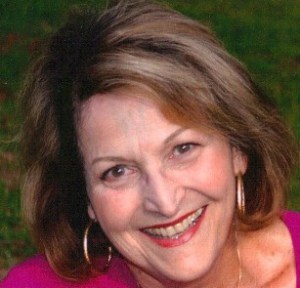 Cora J. Ramos is an award winning author of short stories of mystery and suspense that straddle the edge-whether that edge is the paranormal, a deadly decision or the place where science ends and magic resides. A collection of her stories can be found in the anthology,Valley Fever, Where Murder is Contagious; stories set in the San Joaquin Valley of California.
Cora J. Ramos is an award winning author of short stories of mystery and suspense that straddle the edge-whether that edge is the paranormal, a deadly decision or the place where science ends and magic resides. A collection of her stories can be found in the anthology,Valley Fever, Where Murder is Contagious; stories set in the San Joaquin Valley of California.She is the author of DANCE THE DREAM AWAKE, a present day romantic suspense with a captivating Mayan past life.
Her newest novel, HAIKU DANCE is awaiting publication this year—a spicy historical romance of a samurai and a courtier in the Emperor’s court of ancient Heian Japan, 980 A.D. at the time when the Tales of Genji, Sarashina Diary and The Pillow Book of Sei Shonagon were written.
Website: www.coraramos.com
Blog: http://coraramos-cora.blogspot.com/
Author page: http://www.amazon.com/Cora-Ramos/e/B00BAKLGXO








September 15, 2015
WFW Sweepstakes! Enter to win a copy of The Good Neighbor before pub day!
Finished copies of The Good Neighbor have landed at St. Martin’s Press!
Enter to win one of twenty copies from the publisher!
And, I’d so appreciate if you’d share the link with your own friends and neighbors!
Click here: http://smarturl.it/TGNSweeps
Amy xo








September 14, 2015
Guest Post: No Mystery At All: NYT Bestselling Mystery Author Juliet Blackwell Writes Great Women’s Fiction
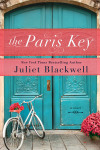 Do we choose what we write? Or does what we write, choose us? It’s kind of like how many licks it takes to get to the middle of a Tootsie Pop. The world may never know. But we do know, that as writers, we think about genre and the kind of story we want to tell. What if that changes? Do you dare genre hop in this publishing climate, make new writer friends, join new groups, learn the new rules?
Do we choose what we write? Or does what we write, choose us? It’s kind of like how many licks it takes to get to the middle of a Tootsie Pop. The world may never know. But we do know, that as writers, we think about genre and the kind of story we want to tell. What if that changes? Do you dare genre hop in this publishing climate, make new writer friends, join new groups, learn the new rules?
Today we have with us Juliet Blackwell, esteemed mystery author who has now taken a leap into women’s fiction. Find out why she wrote this book, and maybe more importantly, how.
And yes, we’re (totally door-cover-sisters, I know).
Please welcome Juliet Blackwell to WFW!
Amy xo
My Mysterious Path to Women’s Fiction (Or how—and why—a New York Times bestselling mystery author decided to turn her hand to women’s fiction)
by Juliet Blackwell
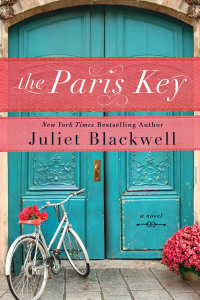 A few years ago I fulfilled a fantasy: I rented an old stone farmhouse from a friend and spent a month in the French countryside, writing and learning the language and strolling through fields of sunflowers. At first I thought I would skip Paris—after all, I’d been there before and had seen the famous attractions: the Louvre and the Eiffel Tower, Notre Dame and the Sacré-Coeur and Montmartre.
A few years ago I fulfilled a fantasy: I rented an old stone farmhouse from a friend and spent a month in the French countryside, writing and learning the language and strolling through fields of sunflowers. At first I thought I would skip Paris—after all, I’d been there before and had seen the famous attractions: the Louvre and the Eiffel Tower, Notre Dame and the Sacré-Coeur and Montmartre.
But at the last minute I found an inexpensive place to stay and wound up spending almost ten days in the City of Light, around the corner from a section of town called Village Saint-Paul. The medieval-era neighborhood is made up of a series of interconnected stone courtyards where antique vendors hawk their wares and cats laze in windows framed by lace curtains.
I stumbled across a dusty old locksmith shop on the rue Saint-Paul and shared a cup of tea with the proprietor. We spoke of World War II and the rich history of locks and keys, of Jean-Paul Sartre and the fine art of lockpicking.
A novel was born.
But, to my surprise, the book coalescing in my thoughts wasn’t a mystery – no matter how much I tried to bend it to my will! So, after penning eighteen novels for three different mystery series, I turned my hand to my first “women’s fiction.”
Why switch genres?
Artists thrive on challenge; on finding new ways of seeing the world and portraying ideas. I’ve been a painter my whole life, and it’s always the empty canvas that calls to me, the facial expression I’ve yet to capture or the beauty that remains just out of reach. Nothing kills creativity faster than getting into a rut. While I enjoy developing my ongoing characters in my current mystery series, and love the chance to revisit them whenever I begin writing a new installment, I couldn’t repress the tantalizing idea of writing a standalone that didn’t revolve around dead bodies!
When I stumbled across that Parisian locksmith shop, I knew I wanted to write a novel about it—and I knew, deep down, that the story wasn’t a standard mystery. It was time to challenge myself to write a different kind of book.
Easier said than done: Making the switch
The hardest part about writing women’s fiction for me was finding the form of my novel. In mysteries, the plot skeleton is clear: someone dies, the protagonist investigates, clues are discovered, and finally a killer is unmasked (signaling the end of the main narrative.) But with women’s fiction, I had to figure out how to give my story structure—to find its beginning, middle, and end. Where to start, how to propel the storyline forward, and perhaps most difficult of all: how to know when the story’s over.
In The Paris Key, I alternate the stories of my main contemporary character with her mother’s perspective from thirty years earlier. The process of the protagonist reinventing herself in Paris and unearthing secrets from her mother’s past provided the main external plot points to move the story along, while the main character’s sense of self evolves and changes.
A Tale of Two Genres: The Differences
What I most loved about writing The Paris Key was allowing my tale to meander a bit, slowing the pace and savoring life in Paris. The City of Light is so evocative: whether my character is being seduced by a chocolate croissant, climbing to the top of Notre Dame to visit the gargoyles, or creeping through the tunnels of medieval catacombs, the setting is key. My protagonist interacts with Paris as she would with a human character— and that interaction creates conflict and, finally, resolution.
Finally, in The Paris Key I was able to delve into the thoughts, feelings, and mindset of my characters in a way I don’t usually in my mysteries. Character is my favorite part of any novel, and in my mystery novels I do spend a lot of time on character development—background, personal quirks, thought processes. But in The Paris Key I was able to stretch out the character development, using flashbacks and inner thoughts to reveal psychic wounds and historic trauma and show how these play out in the contemporary story. In The Paris Key I was able to linger on these details long after a typical mystery reader would want me to “get on with the process of finding a killer, already!”
The Result
The Paris Key emerged as a tale of reinvention: an American woman, facing divorce, takes on the challenge of moving to a foreign country to take over her uncle’s locksmith shop. In the process, she unearths family secrets, faces some hard truths, and learns to open her heart and mind to the magic of the world around her. In order to tell the story, I had to stretch my writerly wings. Though I include aspects of mystery and suspense, The Paris Key is very much a novel of women’s fiction—and I enjoyed every minute of writing it. I’ve already started on the next one!
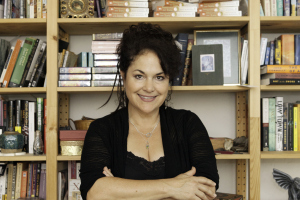 Juliet Blackwell is the New York Times bestselling author of the Witchcraft mysteries and the Haunted Home Renovation mysteries. This is her first work of women’s fiction. She lives in California. Visit Juliet online at www.facebook.com/JulietBlackwellAuthor and http://www.twitter.com/JulietBlackwell.
Juliet Blackwell is the New York Times bestselling author of the Witchcraft mysteries and the Haunted Home Renovation mysteries. This is her first work of women’s fiction. She lives in California. Visit Juliet online at www.facebook.com/JulietBlackwellAuthor and http://www.twitter.com/JulietBlackwell.








September 10, 2015
Guest Post: Author Densie Webb Confesses She Steals Like An Artist
 I’m so excited about this guest post by Densie Webb today because I’m totally on-board. In my upcoming novel, The Good Neighbor, there’s definitely a “stealing” story which I’ll share! So it’s good to know I’m in amazing company — Densie included!
I’m so excited about this guest post by Densie Webb today because I’m totally on-board. In my upcoming novel, The Good Neighbor, there’s definitely a “stealing” story which I’ll share! So it’s good to know I’m in amazing company — Densie included!
Share in the comments where your ideas come from!
And please welcome Densie Webb back to WFW!
Amy xo
I Steal Like An Artist, Don’t You?
by Densie Web
Immature poets imitate; mature poets steal; bad poets deface what they take, and good poets make it into something better, or at least something different. The good poet wields his theft into a whole of feeling, which is unique, utterly different from that from which it was torn. —T.S. Eliot
There is nothing new under the sun.— Ecclesiastes 1:9
As writers, nothing we create is original. There, I said it. But, even that is not an original thought. The greats, like Picasso and Eliot, even the Bible, it seems, were bold enough to admit it long before I typed those words. As writers, creators, dreamers, we all like to think that our ideas, our words, our stories are unique. But we’re all hoarders. We watch, we listen, we read, we observe. We collect. And when we’re good and ready, we raid our collection for the perfect thing to slip into our stories.
In the very first audio post on Women’s Fiction Writers (September 3rd), Amy interviewed author Holly Robinson, who said that writers are magpies. Brilliant. European folklore has it that magpies are compulsive thieves of bright, shiny things that they collect in their nests in order to lure a mate. Instead of hoping to lure a mate, writers hope to lure readers with their bright, shiny stories. (Well, maybe some of us hope to lure a mate.)
I hadn’t really given the idea of artistic thievery much thought until a couple of years ago, when I was at the Texas Book Festival. I live in Austin, TX and each year the city hosts this awesome event, where hundreds of authors of all shapes, sizes and genres from all over the world convene in the State’s Capitol building and inhabit Congress Avenue for one weekend in October. It’s Christmas morning, the eight days of Hanukkah, your anniversary, and the best birthday party ever, all rolled into one. That year, I was lucky enough to listen to Austin author, Austin Kleon, who wrote Steal Like An Artist. I bought his book on the spot. Here’s the first page, which he gave me permission to steal:
Every artist gets asked the question,
“Where do you get your ideas?”
The honest artist answers,
“I steal them.”
His book is filled with examples of the best and brightest in their fields and how they borrow and build upon what already exists. Pro athletes and musicians, writers and poets are all “guilty.”
Here is where I fess up as to how I stole like an artist in my debut novel, “You’ll Be Thinking of Me.”
Family and friends—Listen to them. No, really listen. There are pearls in there that you may never have manufactured on your own. And they’ll slip by in conversation unless you’re constantly in scan mode. My 24-year old son, in talking about his 20-year old sister hanging with her gaggle of girlfriends, said, “Did she go into a gossip coma?” I felt all the neurons in my brain light up. A “gossip coma”? Yes! And it made its way into my book.
A good friend of mine always sticks her cell phone in her bra. That way, she always knows where it is. And yes, one of my characters pulls her cell phone out of her bra, making for an interesting scene with the male protagonist as she retrieves it and hands it to him.
A friend and colleague, whom I’ve known for over twenty years in my day job, travels internationally and is always a source of interesting stories. She was telling me of her latest adventure and I said something about how amazing it sounded and she responded with, “Yeah, sometimes I feel like I’m living vicariously through my own life.” I didn’t even have to write it down. It was imprinted on my brain and now it’s printed on the page, uttered by one of my characters.
Newspapers and magazines–The New York Times and The Wall Street Journal are language sources that can’t be beat. If you don’t read the Wall Street Journal, I would highly recommend it. There are wonderful personal stories in there amid the financial news that feature awesome writing. And The New York Times may be the “old gray lady,” but the language, especially in op-eds or columns like “Modern Love,” which talks a lot about emotions, are gold mines of language.
I read an interview in Entertainment Weekly a few years ago with a celeb, who was not aging well, and the writer pointed out his “leathery pecs.” I knew immediately which of my characters would have “leathery pecs” and that’s in there as well.
Literally decades ago I read a magazine article that used the term “the sappy look of desire.” So descriptive. It was in my word collection all those years and I pulled it out and was thrilled that I was finally able to use it in a story.
Movies—The whole premise of my novel grew from a red carpet interview of a young actor, who was wildly popular at the time. He was asked, “So, where do you think it could go from here?” referring to all the screaming girls and obsessive media attention. He chuckled and said something to the effect that someone could jump out from the crowd and stab him and it would all be over. It was like an electric shock, a revelation of just how vulnerable celebrities are and it was the seed from which my story grew.
Music—Too many “thefts” to count. I constantly listen to music., when I walk, when I work, when I write. Spotify is my go-to source and I get more than my money’s worth each month. One of my characters has to forgive himself for something he’s done. I dubbed it a “slow-spun redemption.” Great turn of phrase. But it’s not original. It’s from a song lyric. Music lyrics are overflowing with clichés, but hidden in between the worn out sentiments about love and heartache are beautifully descriptive words, phrases and emotions that you can “steal” and make your own. (But, never, ever use whole lyrics intact. You’ll be setting yourself up for a lawsuit.)
My life—The whole story takes place in New York, where I lived for 13 years. One of the opening scenes takes place in Zabars, a gourmet institution on the Upper West Side of Manhattan. I used to pass by every day on my way to work and often dropped by on my way home. I can still smell the aged cheeses, the freshly baked bread, the sawdust on the floor. Zabar’s is front and center in my second chapter.
While I was writing the novel, my sweet dog of 17 ½ years died. It was a gut-wrenching experience, but it provided a deep well of emotion to dip into and pour onto the page. I now have a 16-month old pup, I’ve dubbed “devil dog.” I already know his antics will make its way into a future novel.
I like to think that most of the words, the phrases in my story originated with me. But the odds are they’ve all been used somewhere before. The examples here may have been “stolen,” but their use, their placement, their application, their meaning within my story are uniquely mine. And I can comfortably take credit for that. So, the next time someone asks me where I get my ideas, I hope I can be as honest as Austin Kelon and say, “I steal them.”
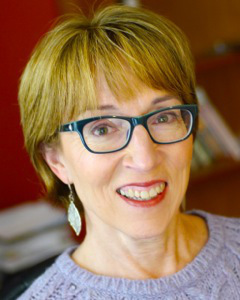 Densie Webb’s debut novel, You’ll Be Thinking of Me (Soul Mate Publishing, 2015) is the story of a young woman’s serendipitous encounter with a celebrity, a brush with obsessive love, and the bittersweet gift left behind by the very person fixated on destroying her life. Densie’s book was just released in paperback and is also available as an ebook and an audiobook. While she still spends her days writing and editing stories about health and nutrition, she writes fiction in the evenings and weekends and is currently working on her second and third novels.
Densie Webb’s debut novel, You’ll Be Thinking of Me (Soul Mate Publishing, 2015) is the story of a young woman’s serendipitous encounter with a celebrity, a brush with obsessive love, and the bittersweet gift left behind by the very person fixated on destroying her life. Densie’s book was just released in paperback and is also available as an ebook and an audiobook. While she still spends her days writing and editing stories about health and nutrition, she writes fiction in the evenings and weekends and is currently working on her second and third novels.
Check out YOU’LL BE THINKING OF ME on Goodreads! There’s a GIVEAWAY!








September 7, 2015
The Fabulous Fall Fiction List 2015
It’s September! Which means it’s Fall! And in addition to meaning PUMPKIN SPICE EVERYTHING, it means a new publishing season.
And while you likely know that THE GOOD NEIGHBOR launches on October 13, what you might not know is that means I needed to find other books to read while I’m writing blog posts, essays, visiting libraries, bookstores, and hosting launch parties (you’re coming to a launch party, right?) from now through November.
I scoured the internet and asked my friends. I came up with these seven novels in addition to THE GOOD NEIGHBOR (what kind of author would I be if I left my own book off the list?) as my go-to for Fall. These books are diverse but all fall under the women’s fiction umbrella. They’re all written by authors I trust to deliver me the right story at the right time.
Here’s why I chose these books as FABULOUS FALL FICTION 2015.
THE MIDDLE OF SOMEWHERE by Sonja Yoerg
Sonja is an adventurer and so is her main character and this makes for a thrilling read, in addition to an emotional one. I like to read stories about things I’ll never do (and don’t want to do, do. not. judge.). This book is already available and getting buku well-deserved buzz.
WHILE YOU WERE GONE by Kate Moretti
I love novellas. They’re like the best bite of the best chocolate (and they last longer). I’m fascinated by shorter-form fiction and sometimes that’s enough to get me to read a novella (think it’s hard to write a novel? Try a novella. Not for the faint of heart.) In the case of Kate Moretti, a NYT best-selling author, I just want to read more of her work while I wait for her next novel.
CHANCE HARBOR by Holly Robinson
I read everything Holly writes and that’s not true of all my author friends (don’t tell anyone). I have already read Chance Harbor and it’s a truthful and emotional family journey. A mother, her two daughters, and the biological/legal daughter the sisters share. Holly’s vivid prose really transported me, as always. And there’s a satisfying ending that’s realistic and not cloyingly sweet. A plus in my book.
THE WORD GAME by Steena Holmes
New York Times and USA Today best-seller Steena Holmes is about to knock it out of the park again with her new novel full of secrets and suspense as two sisters face their painful past to protect a little girl they both love. Novels that bring up questions of character always tug at me the hardest.
THE SHORT & SINCERE LIFE OF ELLORY JAMES by Wendy Paine Miller
It’s time for another novella! This time multi-published author Wendy Paine Miller comes back to readers with a novella about a seventeen-year-old girl who has six months to live and fakes a bucket list to help her mother cope, and then ends up helping herself. Wendy puts a new spin on the traditional bucket list tale here. I can’t wait!
WHITE COLLAR GIRL by Renee Rosen
Best-selling author Renee Rosen’s newest novel is primed to out due her last, and that’s no small feat. Renee has a way of combining strong historical fiction with the tenacity and heart of excellent women’s fiction. Anything she writes is a must for me!
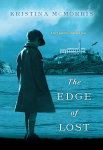 THE EDGE OF LOST by Kristina McMorris
THE EDGE OF LOST by Kristina McMorrisBest-selling author Kristina McMorris tells a page-turning tale that moves from Ireland to New York to San Francisco Bay. As her finely crafted characters discover the true nature of loyalty, sacrifice, and betrayal, they are forced to confront the lies we tell—and believe—in order to survive. What I love about Kristina’s writing is the seamless nature of her storytelling. They’re the kind of books I read and think, “I wanna do that.” Always a good sign.
And, last but not least, THE GOOD NEIGHBOR by Amy Sue Nathan
Here are three reasons I’d love YOU to consider adding THE GOOD NEIGHBOR to your FABULOUS FALL FICTION reading list!
1) Because you like me (you do like me, right? Well then…)
2) Because you can read advance praise not written by relatives or paid for (or even begged for), here.
3) Because you can read the first chapter here and be ready for Chapter 2 on October 13.
What else are you looking forward to reading this Fall?
Let us know in the comments!
Amy xo








September 3, 2015
Author Interview: Sonja Yoerg Shares Tips For Kicking Out Your Writer Doubt
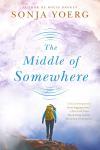 How thrilled I am to bring Sonja Yoerg back to Women’s Fiction Writers! Over the past year I’ve gotten to know Sonja as we’re both members of Tall Poppy Writers (check out Tall Poppy Writer here). Sonja is wicked smart, a devoted friend, and real adventurer! Oh — and how could I forget? She writes a kick ass novel!
How thrilled I am to bring Sonja Yoerg back to Women’s Fiction Writers! Over the past year I’ve gotten to know Sonja as we’re both members of Tall Poppy Writers (check out Tall Poppy Writer here). Sonja is wicked smart, a devoted friend, and real adventurer! Oh — and how could I forget? She writes a kick ass novel!
You’ll not only learn about Sonja’s real and writerly journeys below, but get some great tips on kicking writer doubt out of your day!
Please welcome Sonja Yoerg back to WFW!
Amy xo
Sonja Yoerg Shares Tips For Kicking Out Your Writer Doubt
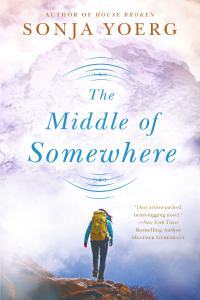 Amy: Congratulations on the release of THE MIDDLE OF SOMEWHERE, your second novel! Without any spoilers, what was one of your favorite scenes to write, and did it come easily or did you REALLY have to work for it?
Amy: Congratulations on the release of THE MIDDLE OF SOMEWHERE, your second novel! Without any spoilers, what was one of your favorite scenes to write, and did it come easily or did you REALLY have to work for it?
Sonja: Thanks, Amy! I’m delighted to be here to chat with you again.
The main character, Liz, has two phone conversations with her absentee father, Russ. During one, she invites him to her wedding. He has another family Liz has never met, and he makes little effort to stay in her life. He’s not sure how old she is and didn’t realize she had finished college. Liz is fiercely independent, tragically so, and is used to her father’s selfishness and disinterest. But being used to something is not the same as being unaffected by it, and although Liz makes quips during the conversation, and takes Russ’s alarming callousness in stride, her frustration and sense of loss is there, underneath her words.
It was a fun scene to write, because Russ is a jerk and Liz is sharp and witty, and an emotional scene, too, because of the undercurrent of pain. Russ and Liz talk on the phone again near the end of the story, so I got to do it again, except, of course, Liz had now changed. If you hadn’t read the whole book, the two conversations might sound the same, even though what’s going on in them is very different. This sort of phenomenon is what fascinates me about writing, and reading.
Amy: How much, if any, of TMOS is based on your own experiences? And if it is, how did you parlay those truths into fiction?
Sonja: The day after our youngest daughter left for college, my husband and I set off on the John Muir Trail, a 220-mile trek through the California Sierra, beginning in Yosemite Valley and ending on the summit of Mount Whitney, the highest peak in the continental U.S. What a fantastic time we had! Just the two of us, with everything we needed on our backs, walking through the wilderness for eighteen days. At some point during the hike, I realized what a rich setting the trail would make, and began to develop the basis for the story. The idea for my debut began with a character, but this book began with a place.
My husband and I kept a journal on the trip, taking turns each evening to write about the day’s events. Exhausted from the strenuous hiking, we struggled to stay awake to complete the task! I used details from the journal in the novel and also relied heavily on my husband’s photographs—800 of them—to remind me of the landscape, the weather, the footing, the atmosphere. The story is as true to the actual John Muir Trail as I could manage; no mountains or rivers were relocated for convenience. I’m not sure why I insisted on this; perhaps out of respect for the journey we made.
Most of the John Muir Trail is remote and not heavily travelled. There are strict quotas for the number of hikers. But because the high passes are about a day’s walk apart, hikers tend to congregate at whichever lake is just shy of the pass, with the intention of tackling the climb in the morning when their legs are rested. As a consequence, we encountered the same people again and again, and welcomed their company. But it occurred to me how difficult it would be to get away from someone whose company you did not want. That idea became the main subplot in Middle of Somewhere. The wilderness may be vast but, as one of the characters says, “the trail is just a skinny little thing.” *cue creepy music*
Amy: What’s the hardest part of novel writing for you — and how do you get around it (or knock it down)?
Sonja: The hardest part? Dealing with doubt. There are days I cannot fathom why I ever thought I could write, when I question not only my ability, but my sanity. What was I thinking? The words swim on the page and I cannot make sense of the character, the scene, the plot, the entire first half of the damn book. I cannot make sense of me, because I was the one who thought I could do this. I even signed a contract saying I could, which in those moments feels more like a contract that has been taken out on someone—me.
How do I locate my bootstraps? I read something I’ve written that doesn’t stink. I pick a scene from a brighter day, or from a different work entirely. It doesn’t have to be writing that sold. It can be a favorite blog post, or a random scene scribbled in a notebook. It can be anything, as long as it helps push the monkey off my back. I read it and think, “Hmm. That’s not the worst thing I’ve ever read. Maybe I’ll look at what I wrote yesterday and see how it goes.”
Another trick I have is to play with mechanics. I’ll search for “that,” and see how many I can get rid of, or read a random chapter out loud to catch echoes. In doing this, I end up reading a passage that reads okay but needs tweaking. I’m a writer again.
Amy: Voice is a topic writers love to discuss, and it’s often accompanied by “how do I find mine?” Any tips for writers who are still “finding their voice?”
Sonja: I doubt there are tricks to finding voice. In my view, voice is the by-product of confidence. When I read the first few pages of a book, I either get the feeling I am in very good hands, or I don’t. For some writers, voice comes naturally. For the rest, I suspect that the best way to gain the confidence that engenders strong voice is to write more. Studying voice probably won’t help because it’s not a matter of technique. It’s more a case of getting out of your own way, and examining what you are doing will interfere with that. But, really, I’m just guessing here. I never studied writing so it could just be my bias.
Amy: The more writers I meet, the more I learn how people have different ways of deciding what to write about. How do you decide that a story is worthy of your time and energy?
Sonja: I’d love to hear about how other writers pick their stories, Amy. So far, the idea for the next book gels in my mind around the time I finish the previous one. My ideas are like puzzles to me. How can I make this more interesting for me to write? That’s what keeps me motivated and I hope it’s also what keeps the reader locked into the story. In a way, it’s more of a challenge for me to take a simple idea and build the complexity into it as I go. I suspect most writers work like that. So, I believe my answer is that it’s up to me to make the story worthy of my time and energy; that’s my goal as a writer.
Amy: What is your best advice for aspiring author of women’s fiction?
Sonja: Read outside your genre. I’m not suggesting there is anything wrong with women’s fiction—it’s what I write—but there’s much to be learned from reading broadly. Try some science fiction and fantasy, some thrillers and mysteries, biographies and travel writing. Go back and rediscover the stuff you had to read in high school, and a few favorites from your childhood. You don’t have to study other books; reading them will suffice. You’ll absorb the lessons subconsciously and knowledge will appear, without direct invitation, in your writing.
Thanks so much for having me here, Amy. I can’t wait until THE GOOD NEIGHBOR comes out next month. Best of luck with it!
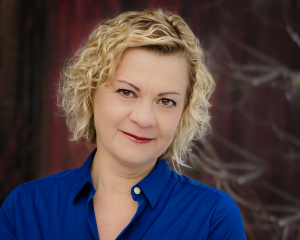 Sonja Yoerg grew up in Stowe, Vermont, where she financed her college education by waitressing at the Trapp Family Lodge. She earned her Ph.D. in Biological Psychology from the University of California at Berkeley and published a nonfiction book about animal intelligence, Clever as a Fox (Bloomsbury USA, 2001). Her novels, House Broken (January 2015) and Middle of Somewhere (September 2015) are published by Penguin/NAL. Sonja lives with her husband in the Shenandoah Valley of Virginia.
Sonja Yoerg grew up in Stowe, Vermont, where she financed her college education by waitressing at the Trapp Family Lodge. She earned her Ph.D. in Biological Psychology from the University of California at Berkeley and published a nonfiction book about animal intelligence, Clever as a Fox (Bloomsbury USA, 2001). Her novels, House Broken (January 2015) and Middle of Somewhere (September 2015) are published by Penguin/NAL. Sonja lives with her husband in the Shenandoah Valley of Virginia.
Website: http://www.sonjayoerg.com/
Twitter: https://twitter.com/SonjaYoerg
Facebook: https://www.facebook.com/SonjaYoerg








Women's Fiction Writers
- Amy Sue Nathan's profile
- 543 followers


